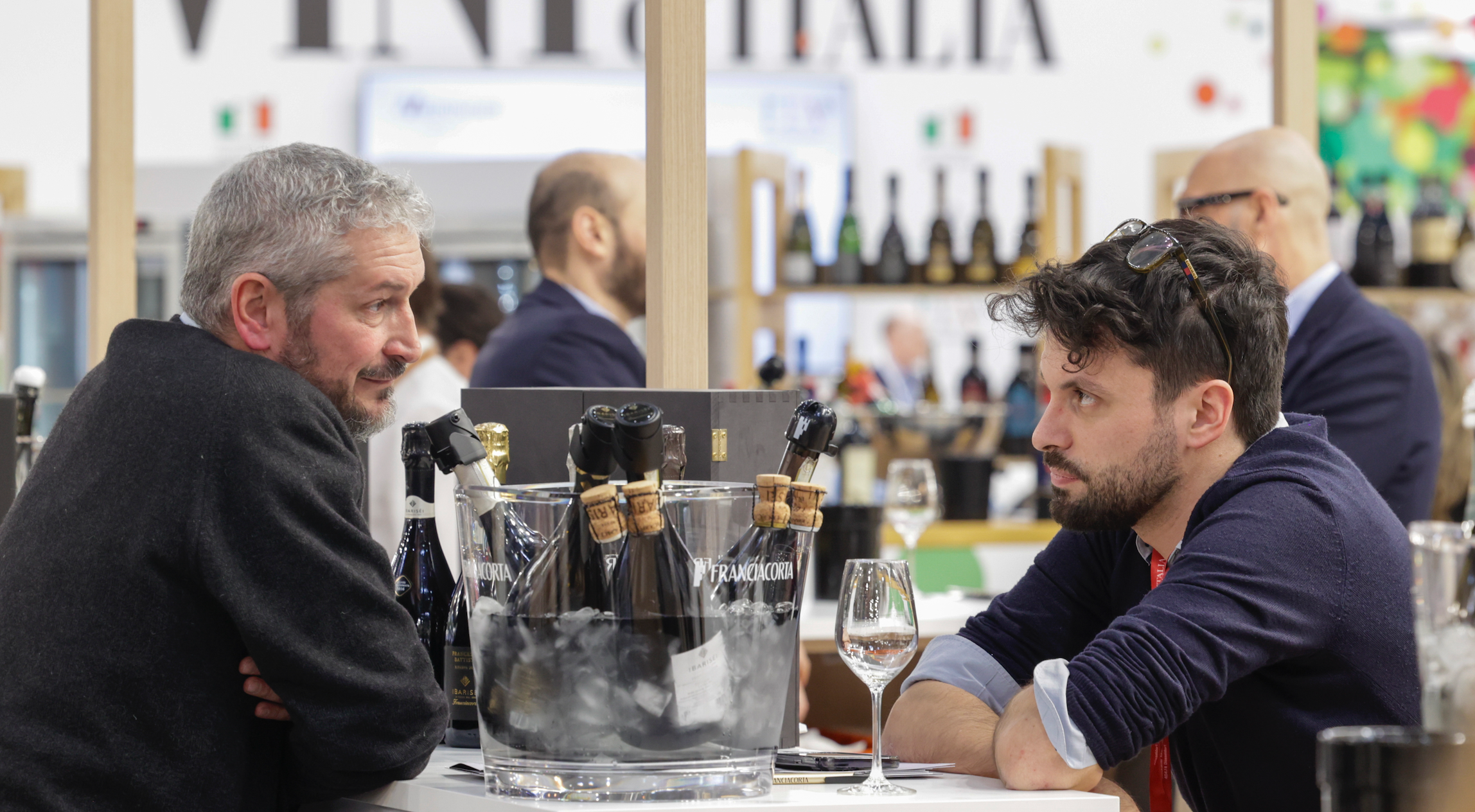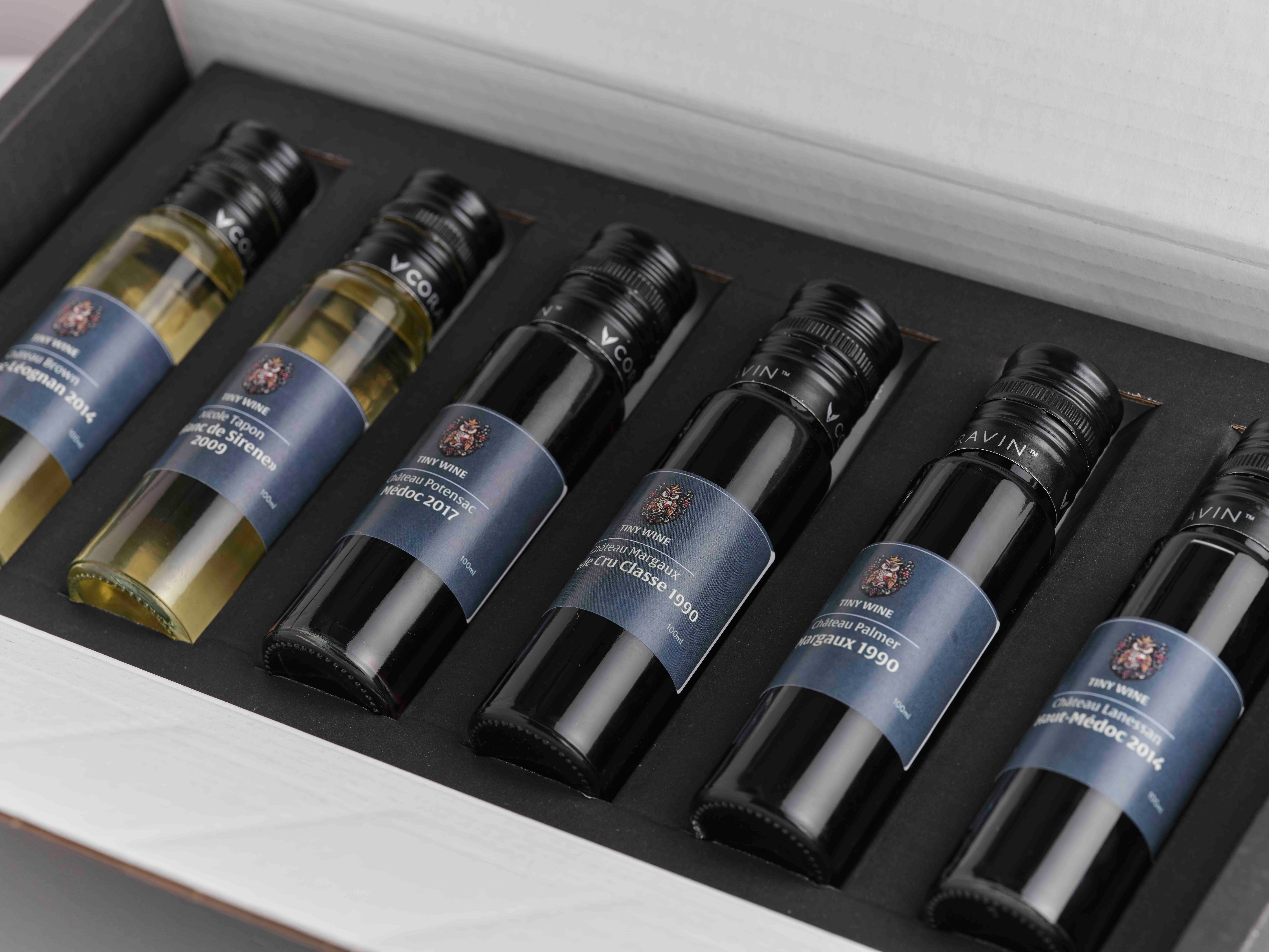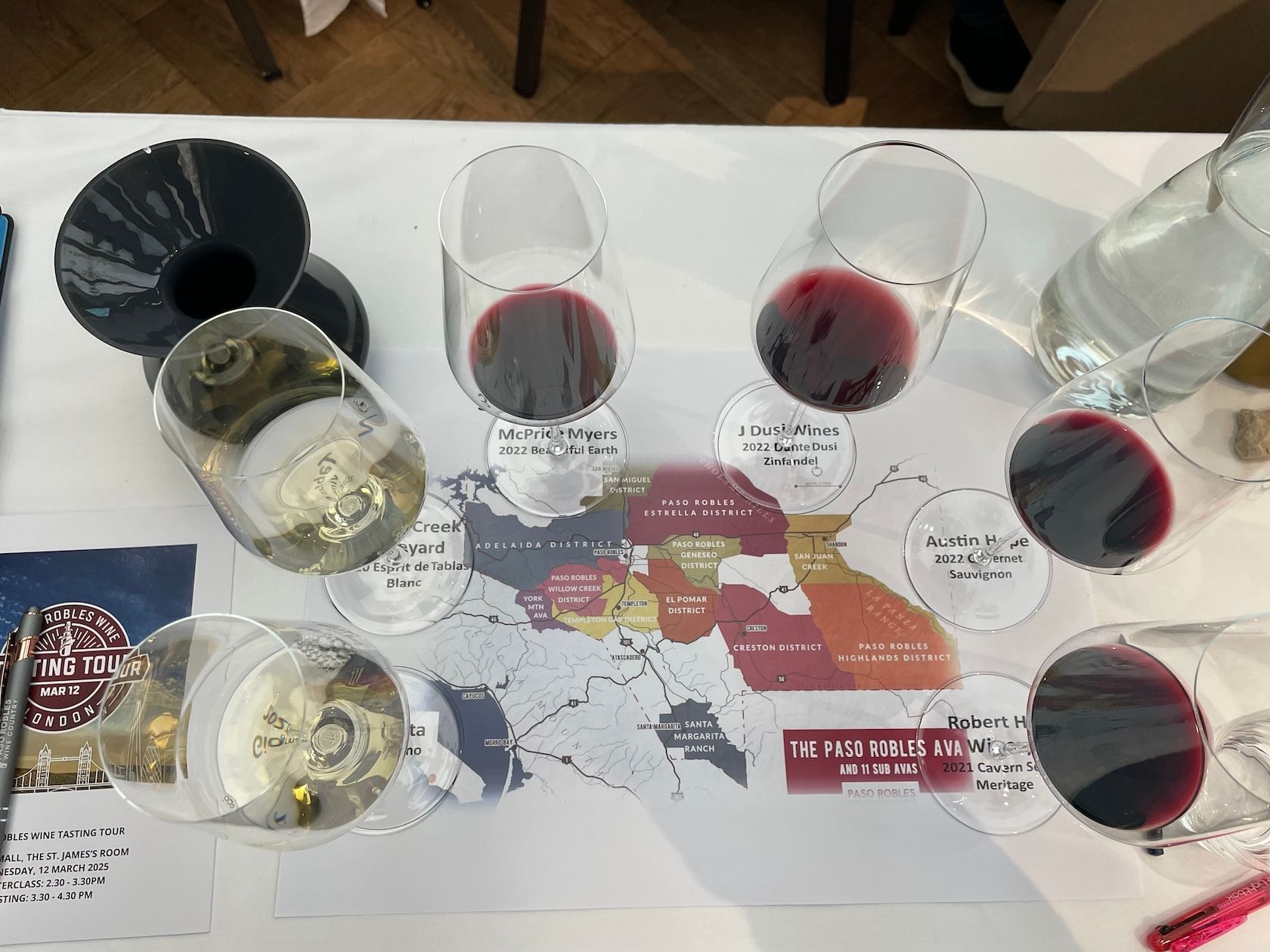If you lined up a 100 senior wine buyers and 100 major wine producers and asked them for candid views on the government’s new alcohol duty system that will see a 2p increase in duty for every 0.1% rise in alcohol content and you will struggle to find anyone that thinks it is a good idea. Regardless of their political persuasion.
Miles Beale, chief executive of the Wine & Spirit Trade Association told the Financial Times this weekend that the new system was “ludicrous” and will be a bureaucratic nightmare to introduce for every wine importer, retailer, restaurant, bar and pub in the country.

The WSTA's Miles Beale and Coterie Holdings' Michael Saunders were able to present the wine industry's case to Number 10 officials last week about why its new alcohol duty regime is unworkable
Both The Wine Society and Majestic Wine have publicly issued statements saying the new system will cost huge sums to administer with The Wine Society estimating it will cost it at least £400,000 to upgrade its systems.
Majestic says the new rules "would impact our ability to invest in our growth plan, to open new stores and to employ more people".
Kim Wilson, managing director of North South Wines, told the Financial Times the new system was “100% not manageable”: “It will need one full-time person managing ABV and two part-time staff on logistics - that’s 8% per cent of my workforce dealing with ABVs, not to mention the day to day distraction when we should be focusing on growing the business — it’s frankly stupid.”
But with the government sticking to its guns the wine industry is having to make plans now to implement the changes. Jamie Matthewson, Waitrose’s BWS trading manager, says that whilst the new duty rules are hardly welcome the industry has to find ways to make them work which means potentially new areas for business for retailers and suppliers alike.
“Duty has been around for a long time. We've been buying wine for hundreds of years and producers have been making wine for hundreds of years,” he says. “We can get over whatever challenges we are set.”
That said the issue of price still has to be paramount in how retailers and its suppliers navigate their way through the new duty rules. He explains: “Consumers are not naive that duty is added to the bottle price, but they do care if the price goes up. We have to make sure we market wines in the right way and really extol the virtues of the wine.”
Quite how you do that when the pressure and focus is on hitting duty rates below 11.5% in order to take advantage of the lowest duty rates possible. Currently all wine between 11.5% abv -14.5% abv is being charged at £2.67 duty plus VAT. But get below 11.5% and it is a very different world. An 8.5% abv wine has £1.82 duty and then goes up in small increments to £2.35 for an 11% abv wine.
It’s complicated
The situation then turns even more complicated in February 2025 and the introduction of the next wave of duty regulations where there will be a similar small increase in duty for every 0.5% abv on a bottle of wine above 11.5% abv. Which effectively means re-calculating the cost of a bottle of wine multiple times as you move up the abv and pricing ladder which is set to go from £2.46 for 11.5% wine to £2.67 for a 12.5% wine, up to £3.10 for 14.5% and £3.21 for 15% abv wine.
Retailers, producers and suppliers at ProWein were already analysing the opportunities and price points they can hit by targeting a wine at 11.5% or 12% abv compared to a 12.5% wine, or a 13% abv wine over a 13.5% abv. They might only be marginal gains but they make a big difference to the final price of a bottle of wine on a shelf and the margins available to be shared down the supply chain.

Origin's Bernard Fontannaz says wine suppliers who want to stay relevant to the major retailers need to come up with solutions to get round the new alcohol duty system
A business like Origin Wine, said managing director Bernard Fontannaz, that wants to be relevant at all commercial price points and keep its business with the major multiples has to be offering both credible 0% abv wines and the new wave of mid-strength 8%-11% abv wines. “We are doing a lot of work in both those areas. We have to. It’s what the retailers want and where the market is going to.”
He accepts the jury is still out on the overall quality and performance of such wines, but he has been impressed by what it has been able to achieve using reverse osmosis technology to get alcohol levels down to around 9%-11%abv without losing too much of the “wine” element.
The key for the so-called mid tier wines is to “start in the vineyard,” he adds. “It’s too early to say how successful they will be but you have to these wines in your portfolio. It’s being driven by the retailers.”
Robin Copestick, joint managing director at Freixenet Copestick, says it is well placed to serve retailer needs as so much of its production, through its parent company Henkell Freixenet is in sparkling wine - being the biggest sparkling wine producer in the world - where alcohol levels are naturally slightly lower.
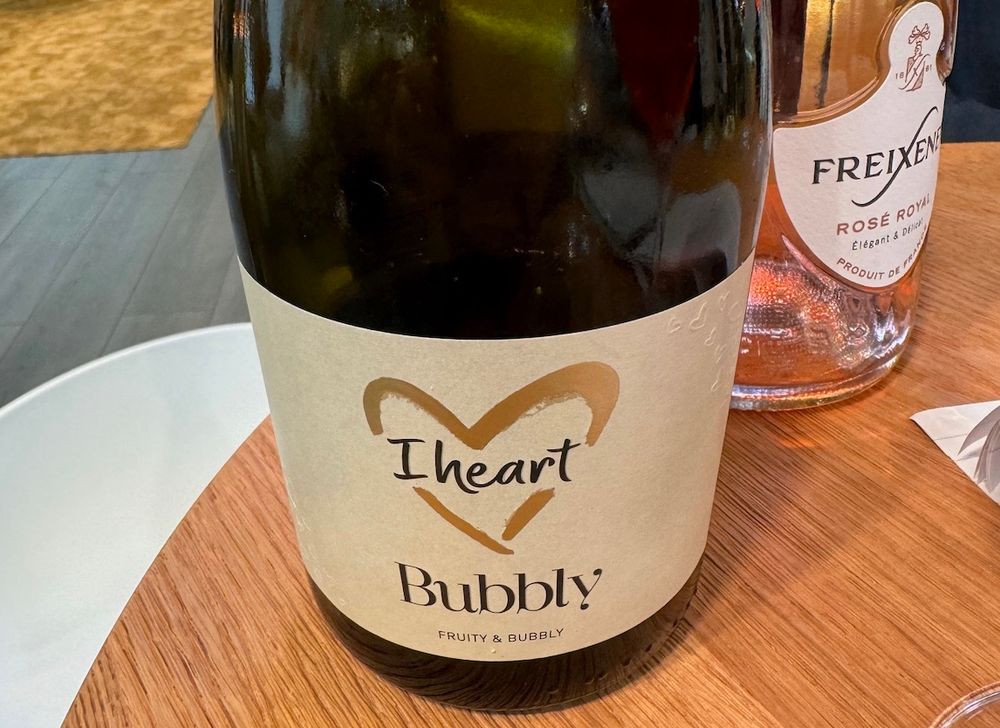
I Heart Bubbly is being introduced to take advantage of the new lower alcohol duty rates for lower alcohol wines
He says it is introducing de-alcoholised 10%-11% abv styles to much of its I Heart varietal-driven branded range, including a 8% abv I Heart Bubbly, and is really pleased with the results.
“They have gone down really well and the fresh, clean, brighter styles really suit the brand. It also keeps the product at an affordable price, but does not take anything away from the wine. It’s light, fresh and easy to drink. It’s what people want from I Heart,” he adds.
The I Heart Wine label re-design, introduced at last year’s ProWein, had also, claims Copestick, gone down well with customers and consumers alike. He said it was time the brand, that is now 11 years old and selling 32.5m bottles around the world, of which 24m are in the UK, was given a re-fresh that firmly put the emphasis on the “Heart” on the label. The new look also works well with the lower alcohol says, he adds.
Copestick says the company as a whole was also working with its other producers and growing number of agency partners - that now includes Wakefield Wines and Zamora, owners of Ramon Bilbao -to bring alcohol levels down wherever they can and where it does not overtly affect the quality of the wine.
“I think the spirit behind the duty changes is a good one in that it encourages people to make wines with less alcohol in them, but how it is being implemented is unnecessarily complicated,” he says.
Demand on producers
A key issue will be to get producers faced with increasing costs and pressures of their own to change the way they make wine just to meet the changes in UK duty, warns Nic Rezzouk, wine buyer at Reserve Wines, the regional wine merchants and wholesaler in and around Manchester.
“Some producers at Wine Paris already pulled a face when I showed them the pricing structure and the impact of the duty on our RRPs,” he says.
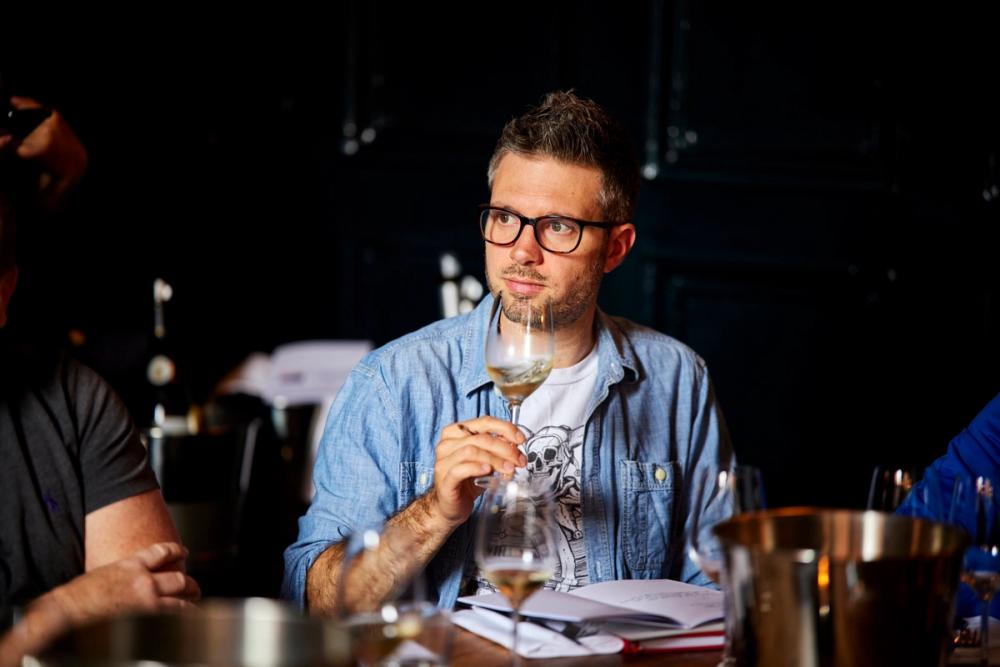
Reserve Wines' Nik Rezzouk says it is going to be tough to ask producers to change the way they work just to hit UK duty rates
Rezzouk says it is working with its producer partners to make high quality wines “but just like the rest of us, maximise the cost-efficiency of the operation, to offer wines at the best possible price”. But admits getting “value for money is trickier than ever, but it is still possible”.
Alex Green at Beyond Wines also says there was “serous intrigue and interest in the lower alcohol market - from around 8% abv” for some time. The duty changes have just accelerated the whole process.
Its Liquid Diamond Prosecco brand was launched at 11% abv and is very much looking to target those drinkers looking for a fun, lifestyle product to drink that is slightly lower in alcohol.
Like Fontannaz he says it is essential a business like Beyond Wines that wants to be relevant to major retailers across all channels, be it multiple grocery, discounters, cash and carry and convenience has a range that is relevant and competitive to what those buyer are looking for.
“We just have to do things differently,” adds Berkmann Wine Cellars wine buyer Gerrard Barnes.
“To be successful in exporting to the UK market there are several things that you have got to do and all of them are tough. Overall, the wines must be well priced at all levels, well packaged in terms of both branding and labelling, then the styles become a little more subjective.”
He is not sure yet there is the quality in alcohol free and lower alcohol wines. “A couple of alcohol free and lower alcohol I came across at Wine Paris were quite good, but the jury is still out,” says Barnes. For lower alcohol levels, some areas will benefit from climate change and will open new wine regions for us. For other regions it’s going to get tricker.”
With regards to hunting for lower alcohol duty wines, he adds: “We’re not going to list wines at 11-11.5% ABV just to avoid duty, particularly with red wines.” “We have tried quite a few already from Italy and from France and they don't work quality wise. For the saving you make in the different duty bands, you shoot yourself in the foot to an extent because it's self-defeating. Yes, the wine is cheaper, but will you get people ordering a second bottle?”
Barnes is, though, looking for house or entry point wines to compliment the ‘super star’ wines in his portfolio. Berkmann’s customer base is 70% restaurants and to a smaller extent independent wine merchants and they are all looking for a one-stop shop.
“Sommeliers are the gatekeepers for hospitality, they are looking for more interesting things at good value,” he says.
“The Xinomavro grape varietal from Greece; the poor man’s Nebbiolo, and the Gaglioppo grape varietal from Ciro DOC in Calabria, are showing really good value for money.”
Sustainability rules
The other big issue being discussed by buyers and suppliers alike at both Wine Paris and ProWein this year was sustainability, and the need to work with producers that can reach the highest possible standards.

Barry Dick MW was abe to set out the steps Waitrose is taking to make its wines as sustainable as possible
Waitrose even hosted a standalone session on the issue at Wine Paris called 'How Waitrose Is Making Its Wine Portfolio More Sustainable’ hosted by BWS sourcing and sustainability trading manager Barry Dick MW and consultant Clem Yates MW.
Dick confirmed sustainability was already a huge part of the supermarket’s buying decisions.
He was able to share retailer’s recent initiatives including removing neck foil from its 12-strong Loved & Found range wine bottles and moving small format wines into cans. Waitrose is also championing cork closures over capsules.
Dick urged the wine industry to continue to adopt sustainable practices, such as exploring bulk, alternative formats and reducing single-use plastic and reducing carbon footprint to “meet consumer demands.”
Consultant Clem Yates MW argued decisions in terms of what is the most sustainable packaging to offer consumers, must be led by the industry.
However, will the push for alternative packaging affect traditional appellations where bottling must take place within the region?
“We’ve got to crack on and work with regions who want to get on and push in the right direction and those more traditional ones will just get left behind. “This is going to become a huge part of our buying decisions.”
However, “jumping straight into bag-in-box” isn’t going to help the consumer. We’re going to put people off the category,” says Yates.
Copestick told The Buyer at ProWein: “Sustainability is high on the agenda. Particularly around packaging and what we can be doing better and differently. Buyers are much more open minded to looking at more formats and anything that can add value to the category. As a company, though, sustainability is absolutely paramount.”

Some of the producers members of the IWCA
The drive for the whole industry to be more sustainable was the reason the IWCA (International Wineries for Climate Action) was at ProWein for the first time this year, said executive director, Charlotte Hey. A chance for many of its 141 winery members to meet up and help push the organisation’s message to get more producers on board.
“It’s all about sharing information and being here to do that,” said Hey. Its members are the “pioneers in carbon reduction,” but also want to help others who are not as advanced in their sustainability journey and show them the way forward, she added.
“It’s our first year at ProWein, five years after we were founded and it’s important we are here to push the low emissions story and get people talking about low emission wines and what that means to consumers,” she added. “We are in a unique position to do that.”
Wine styles
When it comes to styles for the UK consumer, wine buyers were looking for better value alternatives to regions recently hampered by low yields such as Burgendy and The Loire.
Barnes says Bordeaux is ‘getting a kicking’ right now because, despite, its ability too, it’s not perceived to be moving with the trends.
“Perhaps Merlot-Cabernet Sauvignon blends aren’t quite as interesting as they used to be. People have moved on. They are looking for elegance with less oak and with less tannin”.
Medium and lighter reds are ‘having a moment,’ says Barnes. Wines with 11.5-12.5% seemed to hit the sweet spot for buyers because of their ability to hold their elegance, style, interest, and drinkability.
Portugal was perceived as a ‘mime for lesser-known grapes,’ whilst Vinho Verde grape varietal with its slightly lower alcohol is “of benefit” to consumers and producers.
Equally, the buyers said The Loire, not necessarily Sancerre, is continuing to be led by young winemakers producing wines that are turning up in “trendy Hackney natural wine bars and restaurants.”
Price marked opportunity
One of the most innovative buyers and suppliers in the trade is Marc Patch, founder of GM Drinks, who has forged a niche sourcing and supplying wine both for the major supermarkets, but also the big cash and carry and wholesaler operators in the UK.
He was at ProWein with his Spanish and Rioja winery partner, Marques del Atrio. Together they are looking to introduce price marked wines into the convenience and cash and carry sector.
“We see price marked packs in every FMCG category, but nothing in the wine aisle. Now we are one of them,” he said. “Having a price marked pack gives consumers confidence.”
The average shopper accepts you are going to pay a premium for the convenience of going to a local store. A price mark helps your brand stand out, he added.
“Put a price marked chocolate bar next to a non-price marked bar and the priced one and it will outsell it 10 to one. The manufacturer is telling me, the consumer, how much it should be sold for. We need to be doing things differently in wine,” said Patch.
Which will be very much the case come February 2025 when the UK wine industry will have no choice but to do things differently.
